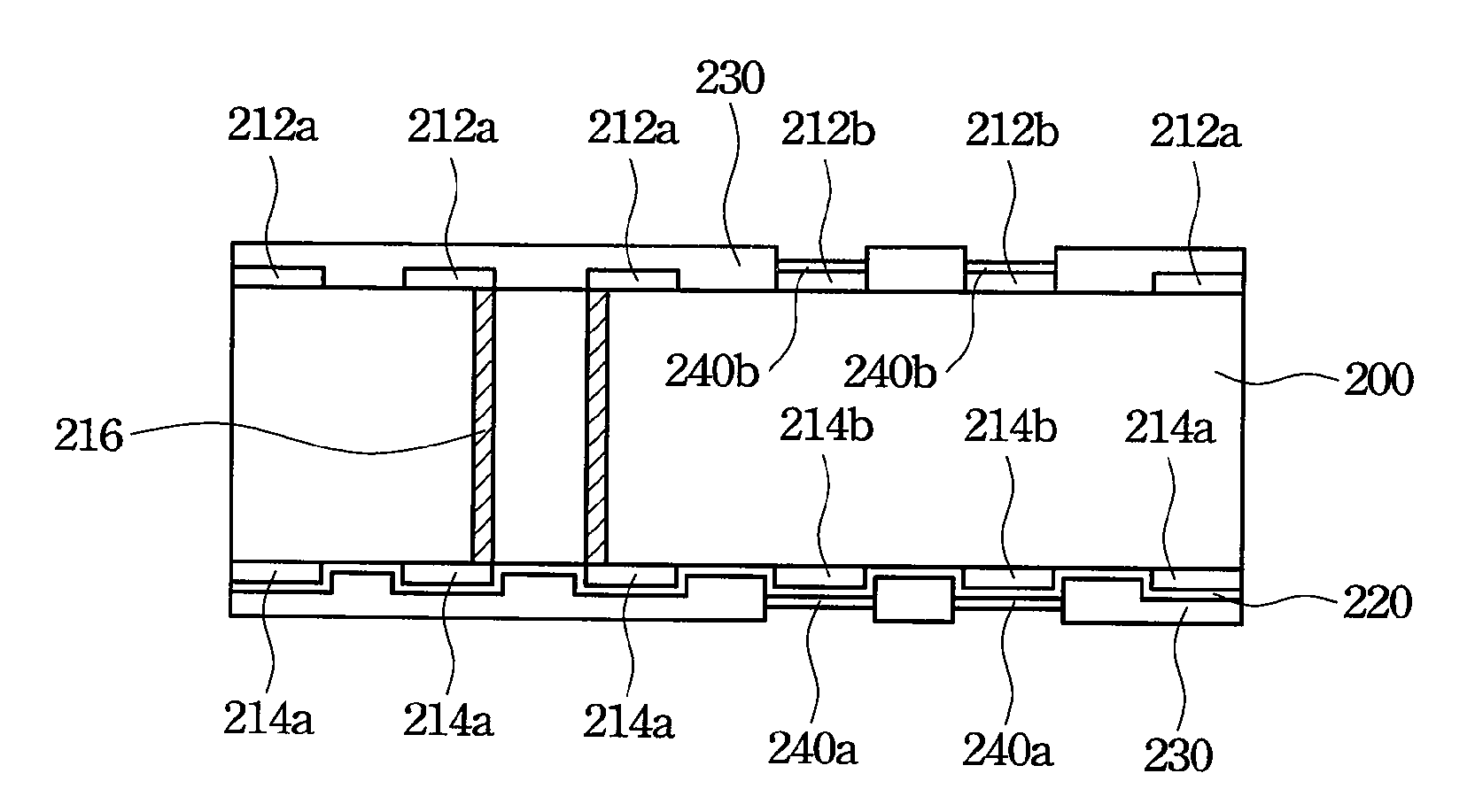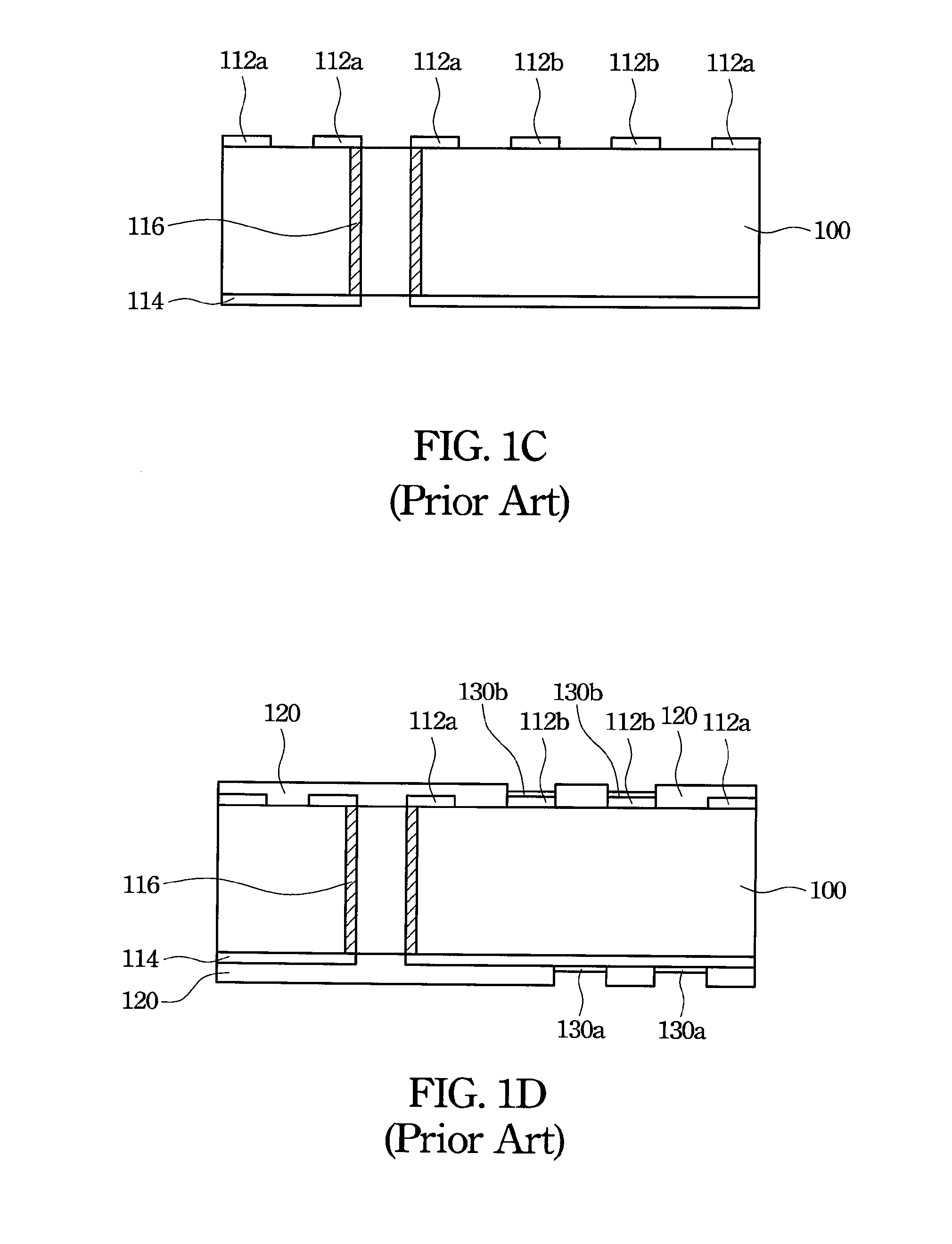Method of Manufacturing the Substrate for Packaging Integrated Circuits
- Summary
- Abstract
- Description
- Claims
- Application Information
AI Technical Summary
Benefits of technology
Problems solved by technology
Method used
Image
Examples
Embodiment Construction
[0017]Reference is made to FIGS. 2A to 2F, which depict cross-sectional diagrams of the process flow in accordance with a preferred embodiment of the present method of manufacturing a substrate for packaging ICs. First of all, a laminated circuit board 200 is provided, which may be a multiplayer circuit board. It should be understood that, the laminated circuit board 200 has not been coated with a solder mask layer, and the laminated circuit board 200 serves to fabricate a PBGA substrate, a CBGA substrate, an FCBGA substrate, a TBGA substrate or a CDPBGA substrate. The laminated circuit board 200 has a top surface 202 and a bottom surface 204 opposite to the top surface 202, wherein the laminated circuit board 200 has at least a through hole 200a therein. Next, a metal pattern layer 210 is formed on the laminated circuit board 200, wherein the metal layer 210 comprises a first metal layer 212 located on the top surface 202, a second metal layer 214 located on the bottom surface 204,...
PUM
 Login to View More
Login to View More Abstract
Description
Claims
Application Information
 Login to View More
Login to View More - R&D
- Intellectual Property
- Life Sciences
- Materials
- Tech Scout
- Unparalleled Data Quality
- Higher Quality Content
- 60% Fewer Hallucinations
Browse by: Latest US Patents, China's latest patents, Technical Efficacy Thesaurus, Application Domain, Technology Topic, Popular Technical Reports.
© 2025 PatSnap. All rights reserved.Legal|Privacy policy|Modern Slavery Act Transparency Statement|Sitemap|About US| Contact US: help@patsnap.com



